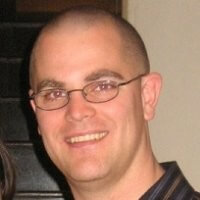Located in the Pennsylvania Dutch countryside of Lancaster PA, Stoltz has been making spreaders since 1945. The company designs and builds 2, 4, 5, 8 & 15-ton capacity lime and fertilizer spreaders for farmers, sold under the Stoltzfus Spreaders brand name. The company also manufactures cement spreaders, which are a line of 15 & 25-ton capacity pneumatic load spreaders sold under the Stoltz Site Spreader brand name. They are used by construction companies to spread high rates of dry Portland cement, lime or fly ash as part of the soil stabilization or soil modification process, which is a construction technique whereby undesirable soils can be improved in place to create cost-effective road bases.


After taking control of the company in early 2009, Hershberger primarily focused on the products. “We took advantage of the slow economy to complete a major product improvement program for our agricultural spreaders, and Alibre Design was a major part of that,” said Hershberger. Most noticeable to farmers is the improved hitch and more heavy duty gearboxes the company introduced as standard equipment. However, Alibre Design was also used extensively for improvements in the structural and sheet metal areas, which will improve manufacturability and increase the service life of the spreaders.
Not content with only improving their farm equipment, Hershberger explains that “we put our cement spreader truck bodies through a major redesign using Alibre Design, which has significantly reduced both engineering and build times. This is important since many of the bodies are customized to fit specific customer needs, and the quicker we can go through the customization process in engineering the quicker the shop can get started.”
Stoltz also did a significant redesign on both the hydraulic system and the controls on their cement spreaders. “Our new proprietary control system is much more user-friendly than the off the shelf packages that we had to use in the past,” said Hershberger. “The key to the new state of the art control system is that it senses the vehicle ground speed and constantly adjusts the spreader’s discharge rate to maintain an even spread rate.”
Hershberger is not alone in his quest to grow and succeed. He has a talented team that works alongside him: Tyler Martikainen-Watcke is lead designer. Ed Howell, PE, is the senior engineer on staff. Gary Lake, PE, leads the technical sales and marketing effort for these big, beautiful behemoths, and was instrumental in the initial design of the cement spreaders.
“We are not alone,” says Hershberger. “We have a talented team of welders, machine operators, painters and assemblers led by our shop foreman, Dave Nolt. Together they take the CAD designs and bend and weld them into reality.”
“While we document current designs and look for areas of improvement,” Tyler Martikainen-Watcke states, “our most important job is to customize our products to meet our customer’s requirements. I use a lot of the sheet metal tools in Alibre Design, which are nice to have in a software package that is this affordable.”
The designers at Stoltz set up modular designs of sub-assemblies that can be customized to meet their customer’s requirements. Their heavy duty construction style and ability to react quickly to customer demands are quickly making the company an industry leader in the farming and construction industries.
In his 16 months at the helm, Hershberger and his team have upgraded their building and created six new jobs in manufacturing and engineering. He believes that with hard work and integrity, manufacturing in the United States can have a bright future, and it is all thanks to free enterprise. Hershberger’s believes that free enterprise allows him to work to make his company as profitable as possible, but that achieving that goal requires that he strive to provide good jobs and a safe and secure environment for his employees while simultaneously providing value and satisfaction to his customers.
“It is traditionally thought that these three objectives conflict, but I believe that achieving all three is important to our long-term success,” said Hershberger.
